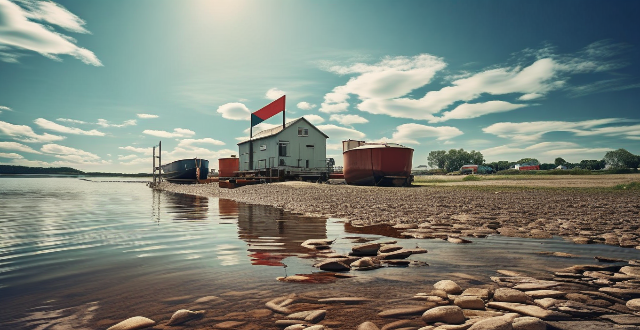Water resources are crucial for economic development but must be protected to ensure sustainability. Strategies for balancing these goals include prioritizing sustainable practices, implementing regulatory measures, fostering collaboration and partnerships, investing in infrastructure and technology, and educating and creating awareness. By adopting these approaches, we can achieve a balance between economic growth and water conservation, ensuring long-term sustainability for all.

Balancing Economic Development and Water Resource Protection
Water resources are essential for economic development, but they also need to be protected to ensure their sustainability. Here are some ways to balance these two goals:
Prioritize Sustainable Practices
* Reduce Water Waste: Encourage industries and households to adopt water-saving practices, such as using efficient irrigation systems or low-flow fixtures.
* Promote Recycling: Implement wastewater treatment facilities that enable the reuse of treated wastewater for non-potable purposes.
* Invest in Research: Support research into innovative technologies that minimize water usage and maximize efficiency in various sectors.
Implement Regulatory Measures
* Set Water Quality Standards: Establish clear guidelines for acceptable levels of pollutants in water bodies to prevent degradation of ecosystems.
* Enforce Emission Limits: Impose strict regulations on industrial discharges and hold violators accountable through penalties or legal action.
* Create Incentives: Offer tax breaks or subsidies for businesses that adopt eco-friendly practices and reduce their environmental impact.
Foster Collaboration and Partnerships
* Engage Stakeholders: Collaborate with local communities, NGOs, and private sectors to develop joint strategies for sustainable water management.
* Share Best Practices: Promote knowledge sharing among different regions and countries to replicate successful models of balancing economic growth with water conservation.
* Build Capacity: Train professionals in water resource management to ensure that there is adequate expertise available for implementing sustainable policies.
Invest in Infrastructure and Technology
* Upgrade Infrastructure: Modernize aging water infrastructure to improve efficiency and reduce leakages.
* Develop New Technologies: Invest in the development of new technologies that can help in water purification, desalination, and conservation.
* Integrate Climate Change Adaptation: Incorporate climate change adaptation measures into infrastructure projects to prepare for changing weather patterns and extreme events.
Educate and Create Awareness
* Raise Public Awareness: Conduct awareness campaigns about the importance of water conservation and protection.
* Include Education in Curriculum: Integrate lessons on water stewardship into school curriculums to foster responsible behavior from a young age.
* Promote Community Participation: Encourage community involvement in watershed management and conservation activities.
By following these strategies, we can achieve a harmonious balance between economic development and water resource protection, ensuring long-term sustainability for both present and future generations.